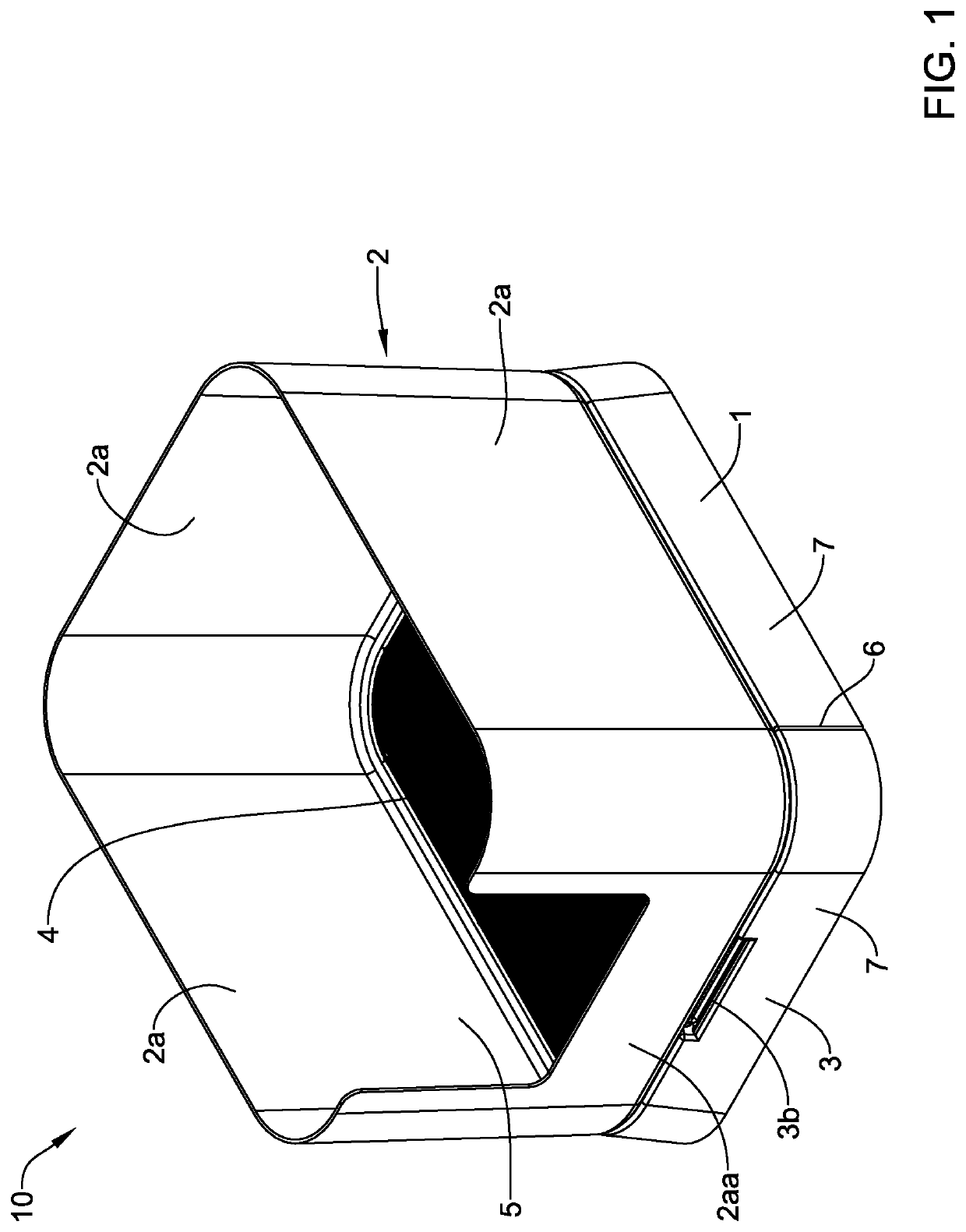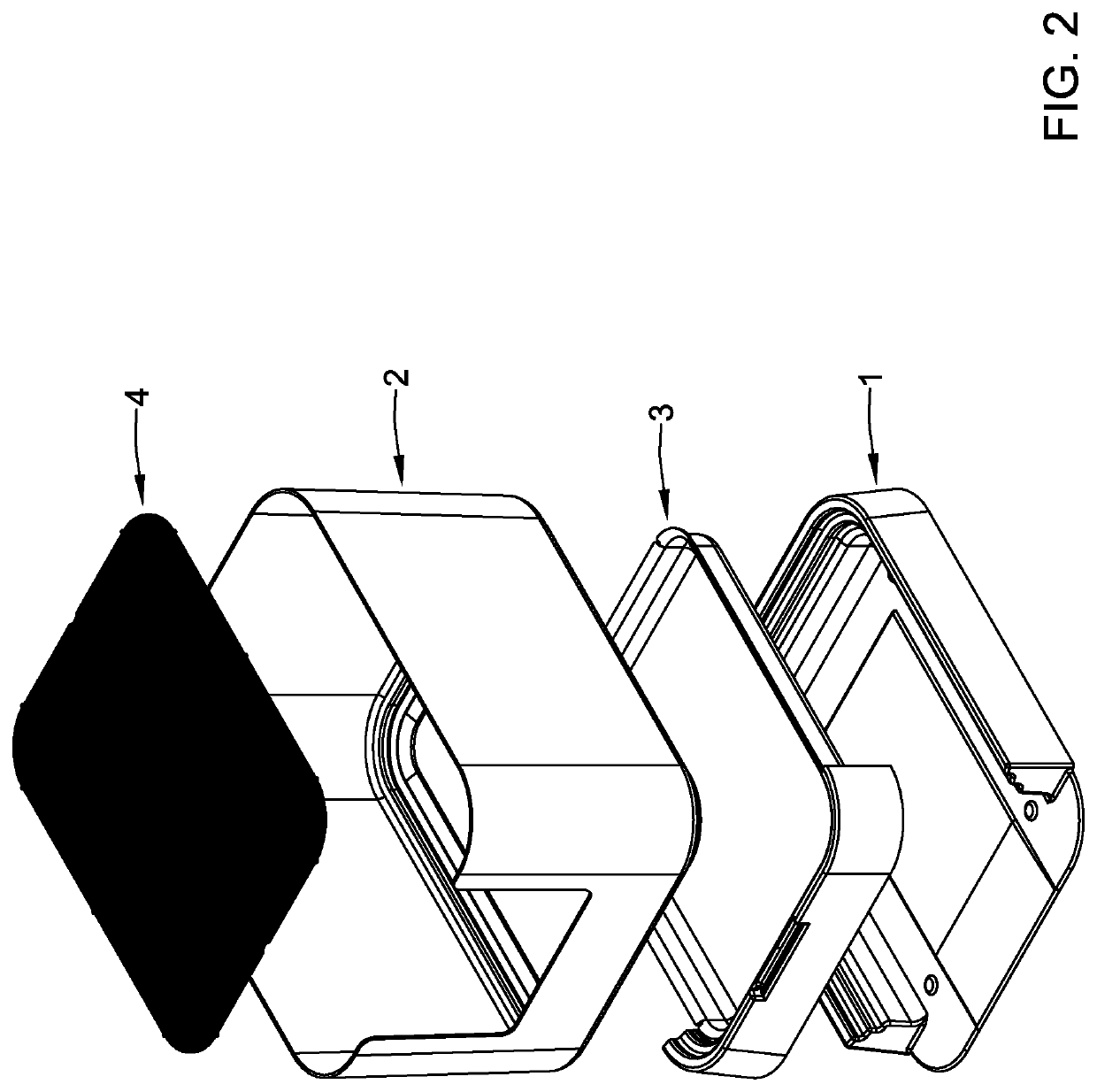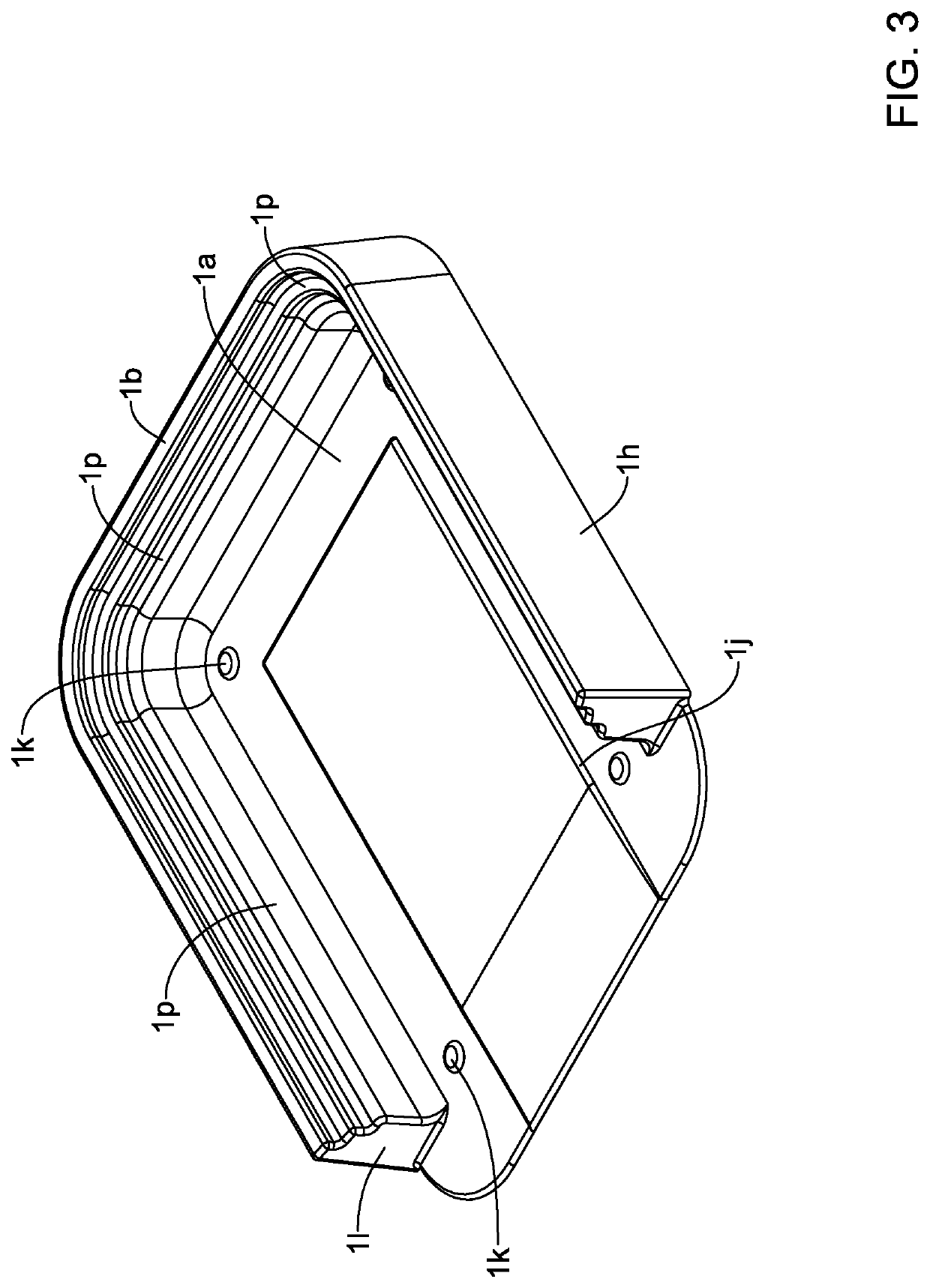Animal Litter and Litter Box System
- Summary
- Abstract
- Description
- Claims
- Application Information
AI Technical Summary
Benefits of technology
Problems solved by technology
Method used
Image
Examples
fourth embodiment
[0096]The animal litter of a the same as above in all three embodiments, and then adding either into the ground mix, or by spraying in after pelletizing, a bio-based odor neutralizer such as but not limited to Itaconix® ZINADOR™ 22L, which is an odor neutralizing chemical that is a polymeric zinc itaconate complex that is 100% bio-based.
[0097]Another alternative embodiment would be same as above and add another one or two organic ingredients into the ground mixture, such as but not limited to hulls or shells of nuts, seeds, fruit, or grasses.
[0098]As shown in FIGS. 1-2, an overall perspective view of an animal litter box according to the present invention is depicted with drawer 3 in the inserted or closed position, and configured to have main components of base 1, on the bottom with 3 sided flange; wall 2, with 4 vertical side walls and bottom flange which rests on base and drawer totally enclosed retainment flange, 8 (see FIG. 11); with drawer 3 to house absorbent pad 13a (see FIG...
second embodiment
[0136]An alternate embodiment of ramp 160 is the same ramp as above, however, the vertical side walls 161 continue straight down from the top edge and meet the bottom 165 at 90° with a small fillet to facilitate easy cleaning, and the side walls 161 become one with the ramp insert reservoir walls. There is no insert border 102 in this
[0137]FIGS. 23-25 depict another alternative embodiment of a ramp for use with and made of the same materials as litter boxes 10 and 10A. The ramp 182 has 2 vertical sidewalls 188, one vertical backwall 189, and an angled short front wall 185 that goes up to a flat edge 186. FIG. 25 shows the ramp insert 184, which resides within the bottom of ramp 182, as shown in FIG. 23. The insert 184 has 2 longitudinal flat edges 190 that contact the inside of the ramp 182 sidewalls 188 and an angled front edge 191, that will contact and be retained by the angled front wall 185, and a tapered end 192 creating space for captured litter. FIG. 23 shows the attachment ...
PUM
 Login to View More
Login to View More Abstract
Description
Claims
Application Information
 Login to View More
Login to View More - R&D
- Intellectual Property
- Life Sciences
- Materials
- Tech Scout
- Unparalleled Data Quality
- Higher Quality Content
- 60% Fewer Hallucinations
Browse by: Latest US Patents, China's latest patents, Technical Efficacy Thesaurus, Application Domain, Technology Topic, Popular Technical Reports.
© 2025 PatSnap. All rights reserved.Legal|Privacy policy|Modern Slavery Act Transparency Statement|Sitemap|About US| Contact US: help@patsnap.com



